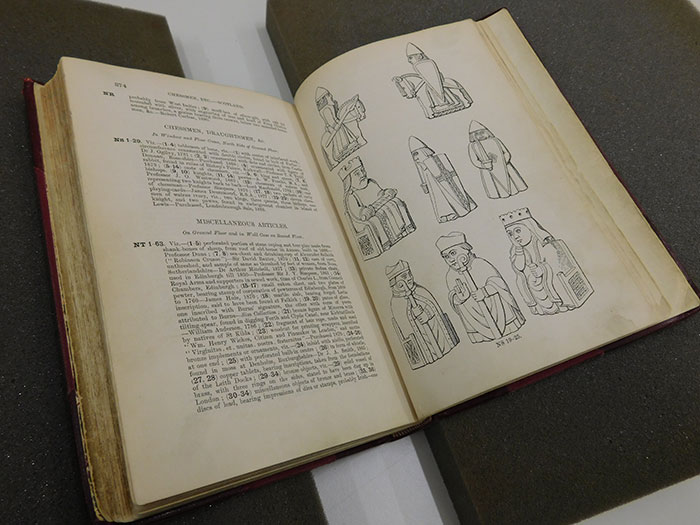I’m in the Museum Library peering at a page of squiggly lines. Gradually I get my eye into it and a window into the 1800s opens as I read about famous discoveries, precious family heirlooms and the relics of Scotland’s past collected by the Society of Antiquaries of Scotland.

But who am I and why am I reading this?
I’m Julie and I’m a postgraduate researcher working on a collaborative project with National Museums Scotland and the University of Glasgow which is funded by the Arts and Humanities Research Council (AHRC). Find out more about the project here.

I am researching the relationships between collecting, representing and writing about the Scottish past during the period 1832-92, particularly through the Society’s activities. This involves comparing the archives and publications of the Society and its members to analyse how ideas on the Scottish national past influenced the development of the collections, museum displays and written history.
To do this I am looking through letters, catalogues, minute books, the Proceedings of the Society and much, much, more. I started delving into the archives this January and I have discovered that I am learning the art of reading archives!

Reading archives is like seeing pictures within patterns. You may have visited the Celts exhibition last year, where the museum displayed objects decorated with patterns that had hidden animals. Like me, you may have had to squint and focus on the various swirls before the image jumped out at you. This is just like reading the Society Minute Books! I start by squinting at the scrawled handwriting, work out a few words, then suddenly, a switch seems to turn my eyes on and the words become clear.


I am then immersed in antiquarian Edinburgh. I find out who was put forward for membership, what objects were donated and what talks were presented. I read about the discovery of the Lewis chessmen, a snuff box exhibited that Bonnie Prince Charlie gave to someone’s grandfather just after the battle of Culloden and the donation of a candlestick purported to have been used by Robert the Bruce. Then disaster strikes! The handwriting changes and my eyes switch off so it’s all squiggly again! Luckily it doesn’t take long to switch to the new handwriting and off I go again.


I have only just started my journey of discovery and I hope to find many more interesting glimpses into how the Scottish collections developed. You can follow the project on this blog and discover the countless fascinating stories held in the archives of National Museums Scotland.
